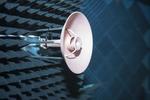
Scientists studying data from the ESA Gaia spacecraft have discovered a previously unknown dwarf galaxy lurking just outside the Milky Way, an extremely low-density swarm of stars two thirds the size of Earth’s galaxy.

More precisely, the Milky Way collided with the second galaxy, absorbing many of its stars and spiraling out a chaotic tangle of stellar matter — birthing new stars and altering the orbits of others.

The project is only the second, after NASA’s MESSENGER mission, to attempt putting a spacecraft into orbit around the solar system’s innermost planet and is one of the most technically challenging missions.

Astronomers report the first detection of matter falling into a black hole at 30% of the speed of light, located in the center of the billion-light year distant galaxy PG211+143.

The ESA recently released stunning photos of a Martian storm front, which were acquired by the Mars Express orbiter in April of 2018.

To help us grok the immensity of the cosmos, the European Space Agency has released a remarkable image of space in which every point is an entire galaxy.

The European Space Agency’s Gaia spacecraft has produced the most accurate star catalogue ever assembled, including high-precision measurements of the brightness and positions of some 1.7 billion stars.

A photo released on April 19, 2018 by the European Space Agency shows this colorful image of the Lagoon Nebula to celebrate the 28th anniversary space of the the NASA/ESA Hubble Space Telescope.

The novel European Space Agency technology would scoop up atmospheric nitrogen and oxygen during near-Earth orbits and turn it into fuel.

The European Space Agency picked the Atmospheric Remote-sensing Infrared Exoplanet Large-survey (ARIEL) mission to explore the nature of exoplanets.

They say the shortest distance between two points is a straight line, but for JUICE—a European Space Agency-led, Jupiter-bound probe scheduled to launch in 2022.

The crucial ministerial meeting held every two years when the agency’s 22 member states spend 48 hours debating one subject – Europe’s future in space.

Live coverage of the ExoMars Trace Gas Orbiter and the Schiaparelli lander arriving at Mars.

If successful, the October 19th landing would be a historic first for Europe

The European Space Agency and SWISSto12 have developed a prototype dual reflector antenna that was 3D printed in a single piece.